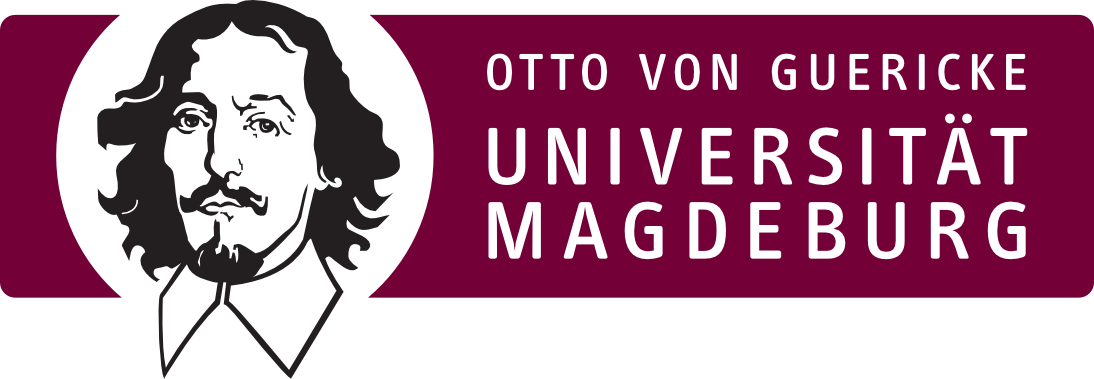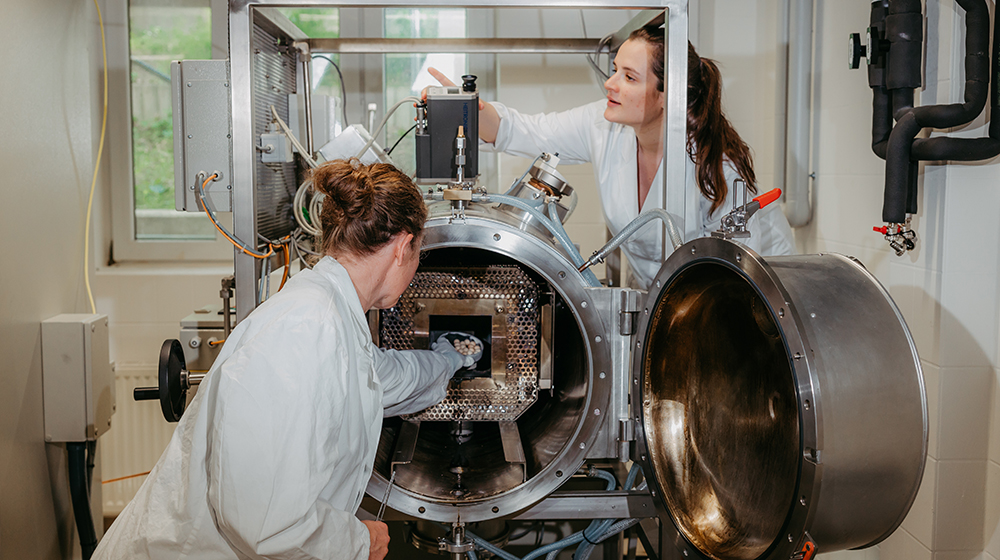
Rarely has humanity been faced with so many challenges at once. The list of global crises is long. Climate change and the coronavirus pandemic alone are affecting the way we live, research and work. And the war in Ukraine and its economic consequences are currently turning industry upside down. Shortcomings are being laid bare, calling traditional processes into question and bringing forward something that has often been kicked into the long grass: transformation. “What is currently happening in many sectors of industry is being heavily driven by the crises,” says Dr.-Ing. Nicole Vorhauer-Huget from the Institute of Process Engineering at Otto von Guericke University Magdeburg. “Finding ways of offsetting the shortage of fossil fuels is currently alarming many branches of industry and providing the impetus for change.”
The fact that German industry is starting to move on this subject, that it is seeking to shift away from finite raw materials and seriously considering the increased use of renewable energies, is playing into the scientist's hands. “At last,” she says, “new technologies and processes are playing a part that could seriously drive forward the energy transformation. Previously they were not considered because they were too expensive and therefore not competitive in comparison with established processes, which were mainly based on fossil fuels.”
Finally, ears and eyes are open to the kind of topics in which Dr. Vorhauer-Huget and her six-strong research group are interested. The process engineers at University have set themselves the goal of significantly reducing the enormous consumption of fossil fuels and the associated CO2 emissions. As a more environmentally-friendly alternative, in cooperation with partners from Magdeburg and Bochum, and alongside other pioneering technologies, they hope to develop microwave technology for hard-to-control and energy-intensive production processes. Using microwave technology could save a lot of time, energy and CO2 here. This is because with microwaves, the thermal energy required for converting materials is not transported via a process gas to the material, but instead generated directly in it, in the form of what is known as volumetric heating. This saves both energy and time. Moreover, by using “renewables” such as wind energy and photovoltaics for microwave heating, no CO2 at all is emitted - unlike when fossil fuels are used.
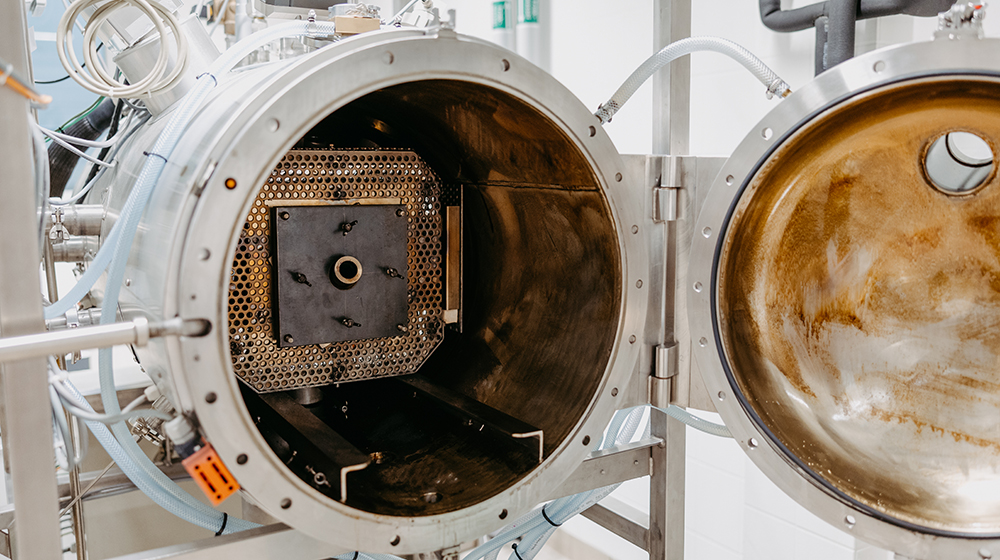 The process engineers at the University of Magdeburg are researching how microwave technology can contribute to a CO2-neutral industry. (Photo: Jana Dünnhaupt / Uni Magdeburg)
The process engineers at the University of Magdeburg are researching how microwave technology can contribute to a CO2-neutral industry. (Photo: Jana Dünnhaupt / Uni Magdeburg)
The multi-award-winning Magdeburg scientist and her team are participating in a subproject within the framework of the collaborative research center / Transregio 287 “BULK REACTION”, which is being funded by the German Research Foundation to the tune of almost ten million euros and in which around 40 scientists from different departments at the Universities of Magdeburg, Bochum and Kiel are involved. They are looking at ways of working in a more environmentally-friendly and efficient manner in future in conventional large-scale production processes using high-temperature furnaces - such as the production of ceramics, cement, bricks and steel. They are focusing on microwave technology, something with which we are all familiar from our homes. Energy that until now has been obtained from oils and gases could instead be drawn from the wind, water or sun. Another advantage of the microwaves that everyone is used to using in their kitchens is that they heat things very quickly. “Time and energy could therefore be saved in large-scale production processes,” says Dr Vorhauer-Huget.
There is a close practical connection to the fact that she is looking into the possibilities of microwaves. The cautious question about research into this method of heating for drying processes originally came from the brick-making industry. Today the interest is greater than ever. Of course microwaves are nothing new for the researchers - it is no secret that things can be heated up quickly with them and that this can be used in a large number of processes. However, the Magdeburg scientist explains that what is new is the fact that “interest in research into them is being signaled increasingly strongly from a variety of different branches of industry.”
According to Vorhauer-Huget, since the war in Ukraine and the associated uncertainties in the gas supply, the whole topic has been given new impetus. The industry is rethinking. One example of this is the brick-making industry - a traditional sector of industry with processes that are reliant on fossil fuels that have hardly changed in decades. The researcher says that the sector is “now having to think seriously about where the enormous quantities of energy for processes such as drying or firing bricks should come from in future.” As part of an applied industrial research project, for some time now the OVGU team has been exploring how everything could function more quickly, without fossil fuels and on the basis of renewable energies, free of CO2 emissions. And that is only a small part of the current microwave research being conducted in Magdeburg.
The area of application of microwave technology is large. But so are the challenges. In particular, the interaction between the microwaves and the materials, which constantly change at high temperatures during the process due to chemical reactions, is not yet well understood, says Dr. Vorhauer-Huget. For this reason, the scientists are collecting experimental data in cooperation projects to be used in determining how well a material with different temperatures and varying compositions can be heated using electromagnetic radiation. In purpose-built equipment the Magdeburg and Bochum scientists are testing the kind of chemical processes that take place in furnaces under controlled laboratory conditions. An example of this is the pyrolysis of biomass for the production of pyrolysis oils, gases and carbon-based solids. To this end, the team is also developing mathematical computer models with which previously unmeasurable, highly dynamic interactions that take place during the process, can be charted on a variety of scales. So that in future they will be able to “turn the optimization screw”, the process engineers are looking deep into the processes. That is why the research team is observing not only the properties of the source materials, but also how quickly they heat up. They are asking questions such as: which process conditions are necessary for the desired reactions to occur as efficiently as possible? “From this” says Vorhauer-Huget, “we can then derive hypotheses about the control of the processes during production and draw conclusions about the quality of the product.”
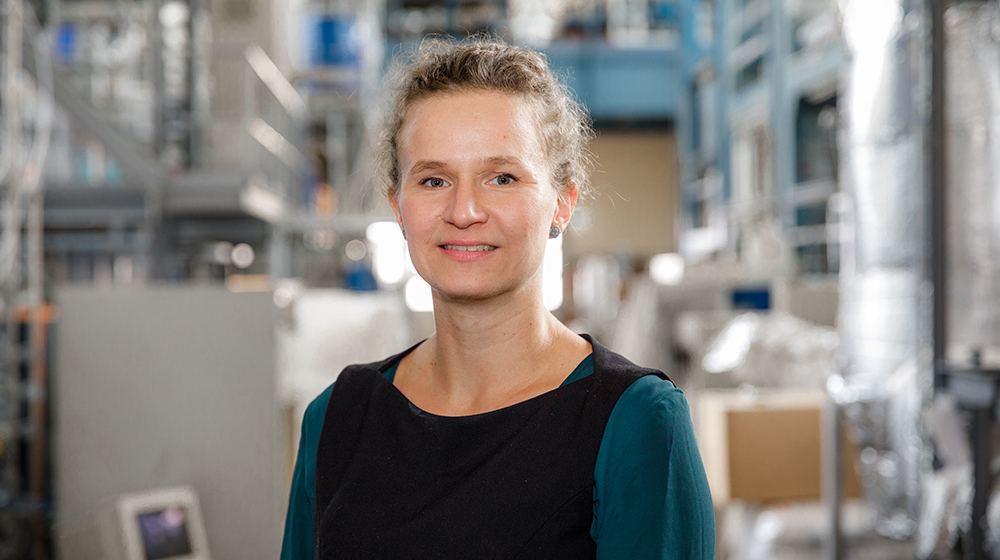 Dr.-Ing. Nicole Vorhauer-Huget (Photo: Jana Dünnhaupt / Uni Magdeburg)
Dr.-Ing. Nicole Vorhauer-Huget (Photo: Jana Dünnhaupt / Uni Magdeburg)
The doctor of process engineering’s CRC subproject is concerned with processes that take place in high temperature reactors at up to 1,000 degrees Celsius. The scientist explains that “The process parameters, for example in the case of the pyrolysis of biomass, determine the later product characteristics, such as the chemical composition of product gases and product oils.” She goes on to say that microwave heating, in comparison with conventional processes, permits fundamentally different process conditions, and so in future it will be possible, to systematically alter and optimize product characteristics. Dr.-Ing. Nicole Vorhauer-Huget says, “It is possible that in the near future, on the basis of our research, new processes for obtaining sustainable products will be available.”
The scientist sees “great potential” in this and continues, “We are already envisaging many projects, because in this field there is still too little interdisciplinary research being conducted.” This, in particular, is important for her. “At our university we have the ideal opportunity to interact with many fields,” says Vorhauer-Huget. “There are important collaborations, for example, with our colleagues in Electrical Engineering, who, among other things, are looking closely at dielectric material properties, from which we are able to derive how well a material can be heated.” In the CRC project, the Process Engineering Group, in turn, is currently working on the carbonization of wood or the transformation of biomass into carbon without combustion in order to produce pyrolysis gases and oils. Here too, seemingly countless further opportunities are opening up. The scientist briefly mentions areas such as iron ore reduction for the production of iron or the use of microwave heating for silicon carbide structures for the semiconductor industry. “Plastic wastes could also be carbonized and hydrogen made with them,” says Vorhauer-Huget. Another application that she considers to be of interest for the future is the manufacture of propellants from biowaste, which so far has not been properly exploited. She says, “We are still at the start, but it really is extremely promising.”
Just how promising can be seen from the initial results of the current microwave research. For example, the Magdeburg scientists have been able, after three years of hard work, to publish early results on the efficient, environmentally-friendly drying of bricks in specialist journals - and thus present them to industry. Towards the end of this year the OVGU process engineers hope to publish initial results on their high temperature reactor research.
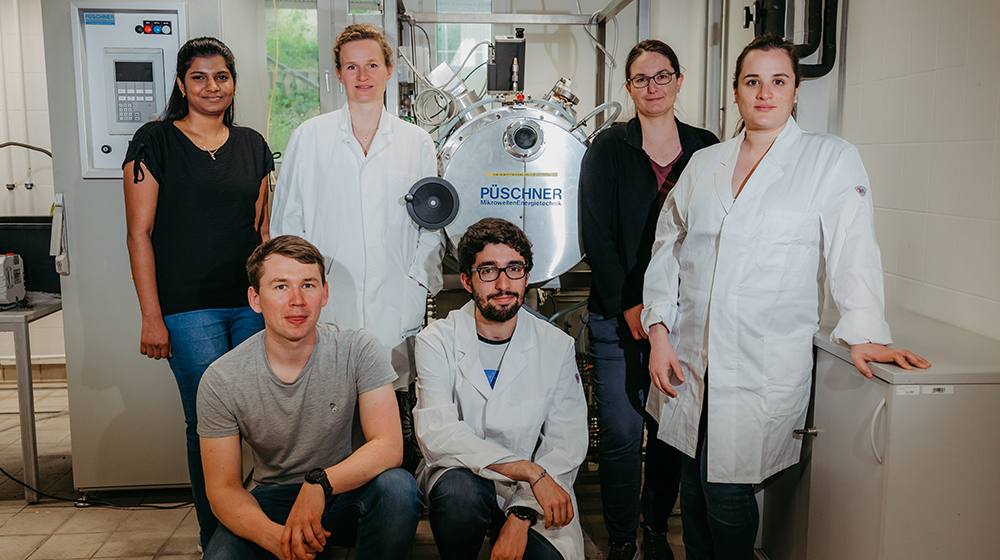 Dr.-Ing. Nicole Vorhauer-Huget's research team. (at the top of picture: M.Sc. Supriya Bhaskaran, Dr.-Ing. Nicole Vorhauer-Huget, M.Sc. Andrea Dernbecher, Jun.-Prof. Dr.-Ing. Alba Dieguez Alonso (from right to left) // down in the picture: M.Sc. Lucas Briest, M.Sc. Juan Fuentes) (Photo: Jana Dünnhaupt / Uni Magdeburg)
Dr.-Ing. Nicole Vorhauer-Huget's research team. (at the top of picture: M.Sc. Supriya Bhaskaran, Dr.-Ing. Nicole Vorhauer-Huget, M.Sc. Andrea Dernbecher, Jun.-Prof. Dr.-Ing. Alba Dieguez Alonso (from right to left) // down in the picture: M.Sc. Lucas Briest, M.Sc. Juan Fuentes) (Photo: Jana Dünnhaupt / Uni Magdeburg)
The scientist explains what drives her to conduct this kind of research: “Above all, it is curiosity that keeps me going. I am spurred on by the team, by the interdisciplinary work and not least also through the involvement of doctoral and undergraduate students who, as part of the research group, can work on topics and advance new ideas themselves.” Added to this is having the feeling that she is “really making a difference.” If we can convince people to integrate the outcome of our research into their processes, that is “the greatest success.” “The work of process engineers is often not as tangible as, for example, that of mechanical engineers or computer scientists, since they deal with industrial material and energy transformation processes that take place inside machines and equipment,” she says. “However, it will be our task to change industrial processes to such an extent over the next 20 years that German manufacturing will be carbon neutral by the year 2050.” For this reason she is keen to promote up-and-coming process engineers who will have to forge ahead in areas where the foundations are just now being laid. The explanation for this is as simple as it is clear: “We know how processes work. And that’s why we can also transform and improve them.”
Guericke facts
- Our microwave ovens at home have an electromagnetic alternating field that “cycles” 2.45 million times per second. The water molecules in the food rotate at the same speed as the alternating field, as a result of which electrical energy is transformed into heat energy. This is how things are heated so quickly in the oven.
- Microwaves work on different materials in different ways. They simply penetrate plastic. That is why we can heat meals in closed containers. In contrast they are reflected by metal, which is why the window of the microwave oven also contains a wire mesh.
- Large-scale industrial production processes consume up to 19 per cent of Germany’s energy demand solely for the supply of process heat.
